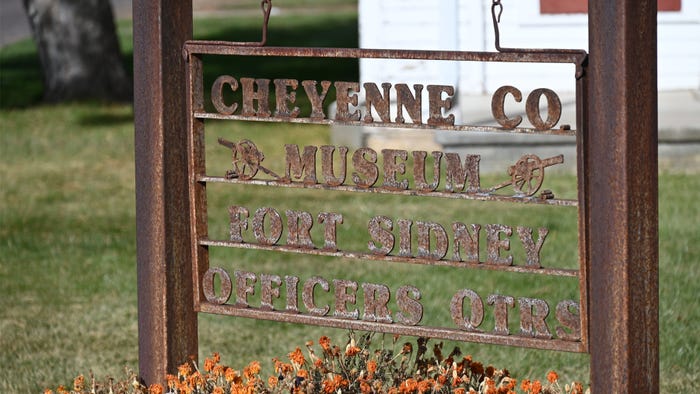
“Sidney Station” was established by the 37th Infantry Regiment two years after the Civil War at a point midway between the north and south branches of the Platte River at what is now Sidney, Neb., in Cheyenne County.
Later renamed Sidney Barracks, at first it was a temporary camp with only one permanent structure — a blockhouse.
In 1869, the site was relocated, and the name was officially changed to Fort Sidney, a major strategic point for protecting construction workers on the Union Pacific railroad. With the discovery of gold in the Black Hills, Sidney became a major supply depot and trailhead along the Sidney-Black Hills Trail for gold seekers. In the mid-1870s, Sidney was a wild trail town with a major trailhead for cattle shipping.
In 1878, 300 Northern Cheyenne under Dull Knife and Little Wolf broke away from their hated reservation in Oklahoma and began to flee to Kansas and Nebraska, sounding the alarm at Fort Sidney. A special train rushed troops to Ogallala to try to intercept Dull Knife’s band, but the Cheyenne escaped into the vastness of the Sandhills.
The post at Sidney was closed in 1894, and the buildings were sold in 1899. Today, the Post Commander’s Home and the married Officer's Quarters, which now serves as the Cheyenne County Museum, are all that remain of the old fort.
The Commander’s Home has been restored and outfitted with period furnishings. There is also a powder magazine on the grounds.

RECALLING THE COUNTY: The history of Cheyenne County is housed in a museum in the married Officer's Quarters of Fort Sidney, with rooms dedicated to Fort Sidney, the Sioux Army Depot and other aspects of High Plains history.
The Officer's Quarter's museum building nearby not only chronicles artifacts from Fort Sidney, but there also is a room dedicated to the Sioux Army Depot, a 20,000-acre military installation once located 12 miles northwest of Sidney that warehoused and distributed supplies and ammunition from 1942 during World War II through Vietnam.
Other rooms in the museum highlight antique tools; a hardware store and dress shop from 1887; firearms and leather; pioneer women; Native Americans; historic toys; a library room, railroad room and schoolroom.
Located just a block off the historic Lincoln Highway in Sidney, the Commander’s Home and museum in the Officer's Quarters are open summer weekdays from 9 a.m. to 5 p.m. and weekends from 1 to 4 p.m. in June, July and August and at other times by appointment.
Learn more at fortsidney.org.
About the Author(s)
You May Also Like






